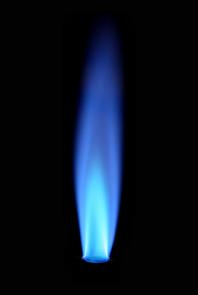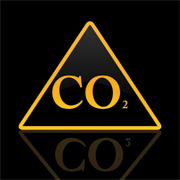 Natural gas is a clean, efficient and reliable source of energy for your home, but like any other fuel, it should not be taken for granted. It’s important to take natural gas safety seriously. Continue reading “Use Natural Gas In Your Home? Here’s How To Stay Safe”
Natural gas is a clean, efficient and reliable source of energy for your home, but like any other fuel, it should not be taken for granted. It’s important to take natural gas safety seriously. Continue reading “Use Natural Gas In Your Home? Here’s How To Stay Safe”
Tag: carbon monoxide
Check Your Home’s Indoor Air Quality
 Your home’s indoor air quality is of vital importance. Keeping tabs on air quality and making necessary adjustments will keep contaminants out of your home as we approach summer in the Long Island area. Continue reading “Check Your Home’s Indoor Air Quality”
Your home’s indoor air quality is of vital importance. Keeping tabs on air quality and making necessary adjustments will keep contaminants out of your home as we approach summer in the Long Island area. Continue reading “Check Your Home’s Indoor Air Quality”
How Can You Improve Your Home’s Indoor Air Quality? Consider Cleaning Out Your Attached Garage
 When your home’s indoor air quality is poor, it will affect the everyday life of all who live in the home. Air impurities can cause headaches, fatigue, dizziness and nausea, as well as aggravate asthma and allergy symptoms. More serious health complications, such as respiratory problems, can occur from long-term exposure. Continue reading “How Can You Improve Your Home’s Indoor Air Quality? Consider Cleaning Out Your Attached Garage”
When your home’s indoor air quality is poor, it will affect the everyday life of all who live in the home. Air impurities can cause headaches, fatigue, dizziness and nausea, as well as aggravate asthma and allergy symptoms. More serious health complications, such as respiratory problems, can occur from long-term exposure. Continue reading “How Can You Improve Your Home’s Indoor Air Quality? Consider Cleaning Out Your Attached Garage”
The Unthinkable Can Happen, If You Don’t Use A Carbon Monoxide Detector
If you use equipment that burns fuel in your Long Island home, you need a carbon monoxide (CO) detector. Actually, you should have several in specific areas of the home. There should be one located near bedrooms, in the kitchen and in the living area or den. And having a carbon-monoxide detector can save lives. Continue reading “The Unthinkable Can Happen, If You Don’t Use A Carbon Monoxide Detector”
Use These Tips To Select A Carbon Monoxide Detector
 Worried about carbon monoxide exposure? It’s possible to realize a safe atmosphere with detectors.
Worried about carbon monoxide exposure? It’s possible to realize a safe atmosphere with detectors.
Carbon monoxide gas is produced by fuel combustion through gas appliances, a gas or oil furnace or other combustible fuel equipment. The only way to discover the presence of the gas is by a detecting mechanism. Continue reading “Use These Tips To Select A Carbon Monoxide Detector”
Facts You Need To Know About Carbon Monoxide Detectors
Carbon monoxide detectors are crucial to your home’s safety. In fact, the state of New York requires carbon monoxide detectors for nearly every home. Every year thousands of people are affected by this colorless, odorless and toxic gas. Continue reading “Facts You Need To Know About Carbon Monoxide Detectors”
Placement Essential for CO Detectors
Homeowners who use fuel-burning appliances or gas heat should know that carbon monoxide detectors are essential for saving lives. The key to keeping your home and your family safe is knowing where to place the them, so that members of your family are alerted immediately, should there be a danger.
CO (carbon monoxide) may be generated in a variety of ways; open flames, water heaters, space heaters and chimneys that are blocked may be sources of this odorless, invisible gas that puts your family at risk.
Where should you place the carbon monoxide detectors in your home for the greatest protection?
- If your home has more than one level, make certain a detector is placed on each floor.
- According to the Consumer Product Safety Commission, one detector should be placed in every bedroom in the home so that a sleeping individual will be easily alerted.
- If you only have one detector, it is recommended that you place it near the sleeping area.
- When placed on a wall, carbon monoxide detectors should be located about 5 feet above floor level on the wall, as CO may rise higher in the air when contained in warmer air emitted by home heating sources and other combustion appliances.
- The ceiling is another good place for the device, because the gas does tend to rise. Never place the detector close to a light source.
- One place you want to avoid placing a detector is close to a fireplace or another fuel-burning appliance. Some of these appliances emit a tiny amount of carbon monoxide when starting, such as a gas stove. Placing a detector closer than 15 feet to these appliances may result in unnecessary alerts.
While placing carbon monoxide detectors in a hallway is something many homeowners do, it’s best to place the devices in the areas mentioned above.
T.F. O’Brien services the Long Island, New York area.
Our goal is to help educate our customers about energy and home comfort issues (specific to HVAC systems). For more information about preventive maintenance and other HVAC topics, please download our free Home Comfort Resource guide.
Carbon Monoxide Facts for Homeowners
Carbon monoxide is an odorless, colorless, silent killer that, unfortunately, is the leading cause of accidental poisoning deaths in the United States. The Journal of the American Medical Association estimates that there are approximately 2,100 accidental carbon monoxide poisoning deaths—each year—in the U.S. But many of these deaths can be prevented with the use of carbon monoxide detectors.
Carbon monoxide is produced with combustion (fuel burning). Items such as gas or oil furnaces, gas clothes dryers, gas water heaters, gas space heaters, gas refrigerators, charcoal grills, fireplaces, gas ranges, and wood burning stoves can be potential sources of deadly carbon monoxide gases.
If your gas, oil, or wood burning appliances are free of malfunctions such as air pressure leaks or airway blockages and are properly vented to the outdoors, you will likely not have a problem with carbon monoxide in your home. (Make sure that you have your fuel burning appliances checked at least once a year by a professional for defects that could lead to carbon monoxide leaks).
But even if you keep up on such maintenance, there’s always a danger that your fuel burning appliances will malfunction without your awareness and release carbon monoxide gases. This is why carbon monoxide detectors are essential to your family’s health and safety.
Carbon monoxide detectors are easy to install and they offer you superb protection against carbon monoxide poisoning. Follow these tips when installing carbon monoxide detectors:
- Install one detector outside of each bedroom or individual sleeping area.
- Call your local fire department and ask what number you should call if the alarm on the detector sounds. Post this number beside the telephone or other easy-to-find location.
- Test the alarm on the detector at least once a month.
- Change the batteries in the detector once a year. (Many people change the batteries with the time change—either in the spring or in the fall—so that they never forget).
If your carbon monoxide detectors’ alarms sound:
- Move everyone outside—immediately.
- Call the phone number provided by your local fire department
- Call a certified technician to inspect all of your fuel burning appliances
So if you have any fuel burning appliances, buy one, or several, carbon monoxide detectors. It’s the only chance you have of detecting this odorless, colorless, deadly gas.
